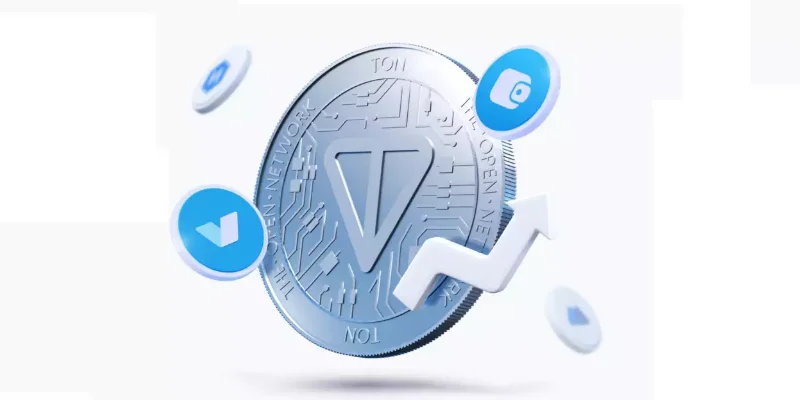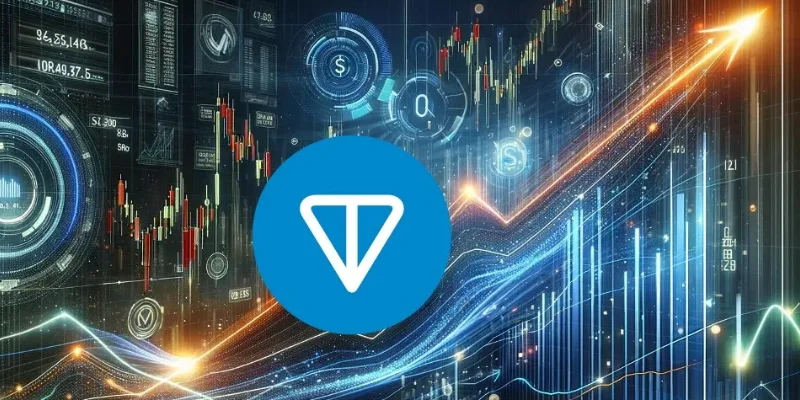How to Stake Toncoins and Earn Rewards
Would you like to discover a simple way to grow your digital assets while supporting an innovative blockchain ecosystem? Staking Toncoins might be your next step. This method allows you to lock your tokens in a specialized protocol and receive consistent benefits in return. At the same time, you contribute to TON security measures, preventing unauthorized transactions and ensuring stable operations. As you become part of the TON network, you help create a more resilient environment that rewards active participation. By engaging in this system, you align with a future-oriented vision that promotes efficiency and fairness across the entire platform.

How to Stake Toncoins and Earn Rewards
Staking Toncoins is a simple yet effective process. You allocate your assets within the blockchain so they can help maintain a secure network infrastructure, ensuring that transactions are processed accurately. This active contribution benefits you through consistent payouts that reflect your level of participation. People often wonder, what is secure network functionality in this context? It is the combined effort of multiple users locking their coins, thereby reinforcing verification protocols and reducing the odds of fraudulent activity. Each staked Toncoin contributes to a collective shield, making the ledger more robust. As the number of stakers grows, so does the network’s ability to handle larger transaction volumes without sacrificing efficiency.
To begin, you need to stake a certain amount of Toncoin in a supported platform or through an official staking service. The process usually involves transferring your tokens into a designated contract or pool, where they become part of the security layer. This commitment reduces the likelihood of double-spending or other dishonest activities, since any attempt to cheat the system requires significant resources. In return, the blockchain protocol compensates you with additional Toncoins, granting a consistent flow of newly minted tokens over time. This balance of mutual benefit is what fuels staking’s rising popularity among blockchain enthusiasts.
What is Staking and How Does It Benefit the TON Network?
Staking, at its core, is a method of contributing your tokens to secure the secure network, with the option to earn ongoing rewards. Instead of relying on massive computational power like in proof-of-work systems, staking allows token holders to participate by simply locking their assets for a set period. This approach is more energy-efficient and promotes a fair distribution of benefits among all who join. You do not have to constantly monitor volatile markets, as staking encourages long-term engagement rather than frequent trading. The result is a stable environment where token holders see tangible returns on their involvement. By providing liquidity and support, stakers help shape a healthier blockchain, ultimately enhancing the Toncoin ecosystem’s resiliency.
For the broader crypto community, staking aligns with an environmentally conscious mindset. It requires substantially less energy than mining, helping reduce the carbon footprint of blockchain technologies. All you need is a compatible wallet that supports Toncoin and staking capabilities, plus a willingness to keep your tokens locked in place. As transactions are validated, your staked amount works behind the scenes to uphold security and transparency. Over time, this cooperative effort establishes a more efficient and sustainable growth model for the TON ecosystem.

How to Stake Your Toncoins Securely
Before staking, research how the network handles your locked tokens and the specific procedures required to validate each transaction. Some platforms operate under delegated proof-of-stake, letting you assign your tokens to trusted validators who run specialized nodes. This approach spares you from managing complex technical setups, although it does require placing your confidence in reliable third parties. Always investigate a platform’s reputation, community feedback, and security track record before committing your funds. As a staker, you gain a voice in network governance and are generally incentivized with voting rights or other benefits. This decentralized model ensures that power is distributed across a wide user base, reducing the chance of single-entity control.
Selecting a reputable service can significantly impact your token safety and overall yield. Look for platforms that provide transparent information on fees, uptime, and slashing risks—penalties issued if nodes fail to follow protocol rules. A reliable staking environment will have contingency plans in place for unforeseen events, ensuring minimal downtime. By diversifying your staked assets across multiple validators, you can further reduce risk and boost the likelihood of consistent returns. This strategy, paired with ongoing research, helps you maintain a balanced approach to securing your Toncoins.
The Role of Validators in the TON Network
Validators form the backbone of TON security, taking on the task of confirming transactions and preserving the blockchain’s integrity. Their specialized nodes verify entries and propagate these validations throughout the TON network. To become a validator, individuals or entities must lock a substantial amount of Toncoins as collateral, proving their commitment to the ecosystem’s well-being. This stake-based model motivates validators to act honestly, as any malicious behavior can result in significant financial loss. As more participants join as validators, the network’s capacity to process transactions grows, creating a scalable framework that adapts to increasing demand. The synergy between validators and stakers upholds a robust environment, making Toncoin a solid choice for those seeking dependable blockchain solutions.
Through continuous collaboration, validators ensure a truly secure network by running frequent checks on each proposed block. Protocol updates, bug fixes, and governance decisions are carried out in a transparent manner, further reinforcing trust among users. Some secure network solutions include automated auditing tools, multi-layer data encryption, and routine performance upgrades. By adhering to these best practices, the TON blockchain mitigates risks, lowers the chance of downtime, and fosters a stable growth environment for all participants.

How Staking Toncoins Helps Keep the Network Secure
Each staked coin boosts the overall defense of the blockchain, actively contributing to a secure network that resists unauthorized changes. To clarify is secure network resilience, it is the capability to thwart data manipulation and confirm each transaction’s authenticity. By collectively locking their assets, stakers form a substantial line of defense against attackers who would need to control a massive portion of tokens to influence the ledger. This makes malicious actions economically unfeasible and technologically challenging. In essence, stakers and validators collaborate to build an environment where every transaction is double-checked, ensuring trustless interactions among all parties. The synergy of shared interest fosters a culture of transparency and efficiency that draws more users to the Toncoin ecosystem.
The more users who stake Toncoin, the more fortified the network becomes against potential threats. This heightened security comes from the growing number of participants who lock their funds, making large-scale fraud attempts prohibitively expensive. Even if some stakers withdraw, the distributed nature of assets ensures no single point of failure. Consequently, the TON blockchain achieves a self-sustaining model that is both stable and alluring for new adopters seeking a trustworthy digital currency environment.
Rewards for Staking Toncoins: What You Can Earn
The most appealing aspect for many users is the opportunity to earn steady rewards simply by holding onto their Toncoins. When you stake your coins, the protocol calculates your share of newly minted tokens or fees collected from network activity. These payouts can arrive at regular intervals, providing you with a predictable source of passive income. Unlike short-term speculative trading, staking fosters a long-range perspective, where loyalty to the network is directly rewarded. This reward distribution model aligns participants’ interests with the blockchain’s success. As the value of Toncoin grows, so do the returns for those who have consistently staked their assets. Over time, this can become a reliable way to expand your holdings without actively buying more tokens on the market.
For the devoted crypto enthusiast, staking offers a refreshing alternative to the stress of constant market fluctuations. By placing your Toncoins in a dedicated staking wallet, you gain peace of mind, knowing your contribution helps secure the network. The reward rates may vary depending on factors like overall stake levels, market demand, and governance decisions. However, the central idea remains the same: a balanced approach that allows participants to enjoy returns while supporting the underlying technology.
Tips for Maximizing Your Staking Rewards
Consistency is key. Ensuring a stable connection to the network will help you validate transactions reliably and avoid potential penalties. Some networks implement strict performance requirements, so running your staking setup on reliable hardware or through a trusted service is crucial. Regularly updating your node software or checking your chosen validator’s performance record can significantly influence your yields over time. By staying proactive, you reduce the risk of missing valuable reward distributions. Moreover, it is worth exploring community forums and official documentation to keep track of any upcoming protocol changes or voting initiatives. Being informed allows you to make decisions that align with your goals while also contributing to the system’s evolution.
Another effective strategy is diversification. Although Toncoin staking can be lucrative, consider splitting your token holdings across different staking pools to minimize risk. Each platform may offer unique rates, lock-up periods, or service fees, so researching these factors can optimize your overall yield. Pay attention to communication channels, because timely updates on network adjustments can affect your staking approach. With careful planning and consistent monitoring, you can enjoy the benefits of a thriving ecosystem while keeping your assets protected.